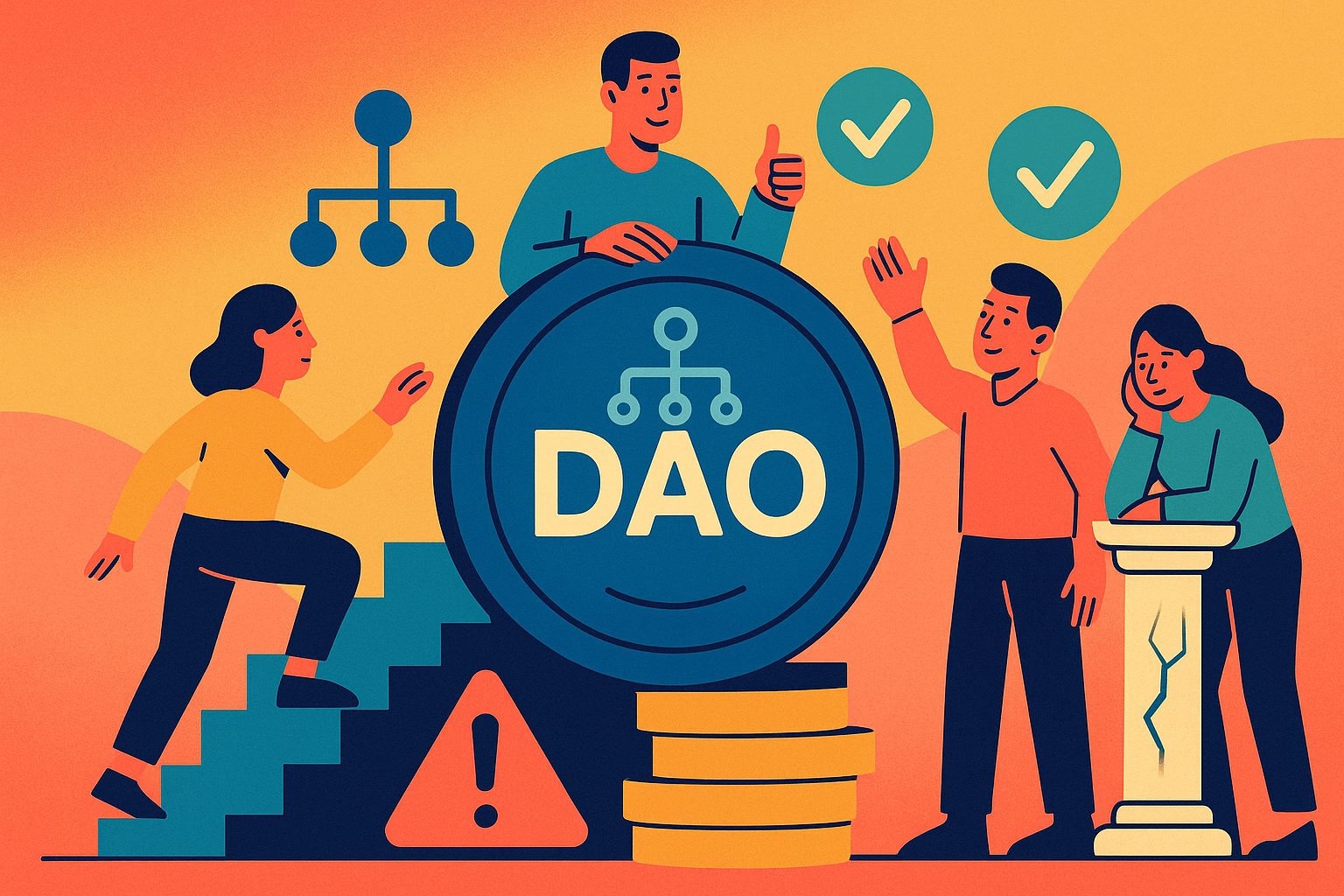Embracing Security Tokens in Modern Crowdfunding
In recent years, the fusion of blockchain technology and traditional financing has given rise to an innovative approach known as crowdfunding with security tokens. Unlike reward-based platforms where backers receive perks or early access, security token offerings (STOs) provide contributors with digital tokens that represent a legal claim on underlying assets or future revenues. This model marries the democratization of crowdfunding with the robust regulatory protections of securities markets. As startups, real estate projects, and even small businesses explore STOs, understanding the fundamental mechanisms, legal requirements, and strategic considerations becomes imperative for anyone seeking to navigate this transformative fundraising frontier.
Demystifying Security Tokens and Their Role
Security tokens are blockchain-based digital assets that conform to securities regulations. Each token typically represents equity, debt, profit-sharing rights, or other financial instruments tied to a project’s performance. Unlike utility tokens, which grant access to a platform or service, security tokens carry the expectation of financial return, making them subject to stringent regulatory oversight. This ensures investors receive legal protections such as disclosure obligations, transfer restrictions, and anti-fraud safeguards. For crowdfunding, security tokens enable fractional ownership of high-value assets—whether shares in a startup, units of a real estate development, or portions of revenue streams—allowing a wider pool of investors to participate in opportunities once reserved for institutions or accredited individuals.
Crafting a Compliant Security Token Offering
Launching a successful STO begins with meticulous legal groundwork. Issuers must determine the appropriate structuring—such as equity, debt, or revenue token models—and ensure alignment with securities laws in relevant jurisdictions. This involves drafting comprehensive offering memoranda, filing registration statements when required, and implementing know-your-customer (KYC) and anti-money laundering (AML) procedures to verify investor identities. Smart contracts are then designed to enforce compliance on-chain, embedding rules like transfer restrictions or vesting schedules directly into token code. By automating compliance through blockchain, STOs reduce operational burdens while maintaining the transparency and immutability that underpin investor confidence.
Selecting the Right Blockchain and Token Standards
Choosing an appropriate blockchain platform is critical for STO execution. Ethereum’s ERC-1400 and ERC-3643 token standards provide modular frameworks for compliance-aware security tokens, integrating features such as partitioned transfers and identity checks. Other chains like Tezos, Polymath, and Stellar offer specialized protocols for issuance and governance. Key considerations include transaction throughput, network fees, security audits, and ecosystem maturity. A well-chosen platform not only streamlines token distribution but also ensures seamless integration with secondary markets, custodial solutions, and investor wallets. Issuers should evaluate developer support, interoperability with decentralized finance (DeFi) applications, and the availability of proven security token platforms to maximize liquidity and regulatory adherence.
Designing Innovative Crowdfunding Structures
Security tokens open up novel crowdfunding structures that blend traditional and decentralized elements. For instance, issuers may combine an STO with a revenue-sharing program, where token holders receive a portion of project revenues through periodic smart contract-driven distributions. Hybrid models allow a base level of tokens to be offered as securities while additional utility tokens grant access to specialized services or governance rights. Dynamic token models can adjust supply based on funding milestones, rewarding early backers with bonus token allocations. These mechanisms foster deeper investor engagement by aligning incentives and creating transparent, on-chain feedback loops. Experimenting with creative structures helps projects differentiate themselves in a crowded market and appeal to both retail and institutional investors.
Curating a Compelling Investment Narrative
While technology and compliance form the backbone of an STO, crafting a persuasive investment narrative remains paramount. Clear articulation of the project’s value proposition, market opportunity, competitive advantages, and growth roadmap captivates potential backers. Issuers should develop detailed financial projections, risk assessments, and use-of-funds breakdowns, presenting them in investor-friendly formats such as whitepapers, pitch decks, and interactive dashboards. Leveraging multimedia elements—like explainer videos and infographics—enhances comprehension without resorting to oversimplification. Engaging storytelling that weaves together market data, founding team credentials, and real-world use cases builds credibility and fosters emotional resonance, driving backer confidence and fueling momentum during the fundraising window.
Engaging Investors through Community Building
Beyond marketing collateral, STO success hinges on robust community engagement. Issuers must cultivate active dialogue channels—such as social media groups, dedicated forums, and live webinars—to address questions, gather feedback, and foster a sense of collective ownership. Hosting “ask-me-anything” sessions and providing regular status updates demonstrate transparency and invite investor participation. Early-stage token holders can be rewarded with governance privileges, enabling them to vote on key decisions like extension of funding timelines or allocation of bonus token pools. By positioning contributors as collaborators rather than passive financiers, projects build long-term loyalty, reduce the risk of token dumping, and harness community insights to refine product offerings and market strategies.
Navigating Regulatory Landscapes with Precision
Regulatory compliance in STO crowdfunding extends beyond initial issuance. Issuers must monitor evolving legal frameworks across multiple jurisdictions to ensure ongoing adherence. In the United States, STOs may qualify for exemptions under Regulation D, Regulation S, or Regulation A+, each with distinct investor eligibility and reporting requirements. European frameworks like the Markets in Crypto-Assets (MiCA) regulation and the UK Financial Conduct Authority’s guidance introduce region-specific compliance mandates. Implementing geofencing or jurisdictional filters within smart contracts helps restrict token transfers to authorized investors. Active collaboration with legal advisors and engagement with industry consortia—such as the International Token Standardization Association—enables issuers to anticipate regulatory shifts, mitigate legal risks, and position their offerings for cross-border expansion.
Facilitating Secondary Market Liquidity
A key advantage of security tokens is their potential for trading on licensed secondary markets. Platforms specialized in security token trading—ranging from centralized exchanges to decentralized protocols—provide regulated venues for token holders to buy or sell positions. Automated market makers and order book systems enhance price discovery, while atomic swaps and cross-chain bridges expand liquidity across multiple networks. Issuers can boost secondary market activity by establishing token buyback programs, staking incentives, or dividend-linked yield products. Transparent reporting on trading volumes and token distributions further reassures investors. By fostering a vibrant secondary market, projects enhance token attractiveness, reduce liquidity premiums, and strengthen the case for future fundraising rounds.
Addressing Technical and Security Challenges
While security token platforms automate compliance and token management, technical vulnerabilities remain a critical concern. Smart contract bugs, key management lapses, or interoperability flaws can jeopardize token integrity and investor funds. Rigorous code audits by reputable cybersecurity firms, coupled with formal verification methods, help identify and remediate potential exploits before launch. Multi-signature wallets and hardware security modules safeguard treasury and operational keys, while continuous monitoring tools detect anomalous on-chain activity in real time. Establishing clear incident response protocols ensures rapid containment and communication in the event of security breaches. By prioritizing a security-first mindset, issuers build trust in their crowdfunding campaigns and protect long-term project viability.
Overcoming Investor Education Barriers
For many retail investors, the interplay between blockchain, token standards, and securities law can feel daunting. Educational efforts play a pivotal role in demystifying STO crowdfunding. Issuers should publish accessible guides that explain how to set up compliant wallets, complete KYC/AML procedures, and navigate token trading platforms. Interactive tutorials and sandbox environments allow prospective investors to familiarize themselves with the process without financial risk. Partnerships with fintech educators, blockchain academies, and industry influencers expand reach to underserved communities. By lowering the knowledge barrier, projects broaden their investor base, foster informed participation, and reduce reliance on high-fee intermediaries, thereby advancing the democratization goals that underpin STO crowdfunding.
Measuring Success: Key Performance Indicators
Evaluating an STO’s impact requires a multifaceted approach. Beyond total funds raised, issuers should track metrics such as investor count, average ticket size, geographic distribution, and secondary market trading volume. On-chain analytics offer granular insights into token holder behavior, including wallet activity and holding durations. Monitoring social engagement—such as community forum participation, webinar attendance, and media coverage—provides qualitative context for investor sentiment. Post-fundraising milestones, measuring project execution against stated roadmaps and revenue projections reinforces transparency. Regular performance reports maintain stakeholder confidence and set the stage for subsequent funding phases, partnerships, or token utility expansions.
Spotlight on Pioneering Projects
A growing roster of successful STO crowdfunding campaigns illustrates the model’s versatility. Real estate platforms have fractionalized high-value properties, enabling retail investors to participate in rental income and capital appreciation. Renewable energy ventures have tokenized revenue streams from solar farms, channeling community investments into sustainable infrastructure. Startup accelerators have issued security tokens to backers, granting equity-like rights alongside voting privileges on portfolio companies. Even alternative asset classes—such as collectible wines and intellectual property royalties—have found fertile ground through STOs. Each case highlights the adaptability of security tokens in aligning financial incentives, enhancing liquidity, and opening new pathways for capital access.
Anticipating Future Developments
The landscape of crowdfunding with security tokens continues to evolve rapidly. Integration with decentralized finance protocols promises on-chain lending, staking, and synthetic asset creation anchored by security tokens. Innovations in zero-knowledge proofs may enable privacy-preserving compliance, allowing token holders to verify eligibility without disclosing sensitive personal data. Cross-chain interoperability standards will expand investor reach, uniting fragmented markets into cohesive ecosystems. Regulatory sandboxes in progressive jurisdictions will accelerate experimentation, refining best practices for tokenized securities. As traditional financial institutions explore digital asset custody and token issuance, STO crowdfunding stands poised to bridge legacy markets with the burgeoning decentralized economy.
Charting Your Path Forward
For entrepreneurs and project teams embarking on an STO crowdfunding journey, success hinges on blending technological acumen with rigorous compliance and compelling storytelling. Begin by articulating a clear value proposition that resonates with target investors and aligning token design with long-term governance and liquidity goals. Partner with experienced legal counsel and blockchain developers to construct robust smart contracts and compliant issuance frameworks. Invest in community building and educational outreach to demystify the process and foster informed engagement. Continuously monitor regulatory landscapes and security best practices to safeguard investor trust. By embracing these best practices and remaining agile in response to market dynamics, crowdfunding with security tokens can unlock unprecedented opportunities for inclusive, transparent, and efficient capital raising.
Embracing the Security Token Revolution
Crowdfunding with security tokens represents a pivotal inflection point in financial innovation. By merging blockchain’s transparency and automation with the legal rigor of securities markets, STOs empower a new generation of investors and entrepreneurs to collaborate on projects of all scales. The path is complex, demanding expertise in finance, technology, and regulation, but the rewards—broader access to investment opportunities, enhanced liquidity, and aligned stakeholder incentives—are transformative. As the ecosystem matures, those who master the intricacies of security token crowdfunding will spearhead the next wave of democratized finance, forging pathways that reshape how capital flows in the digital age.




